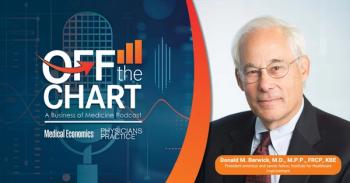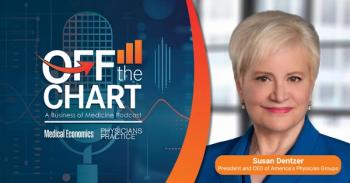
American Healthcare Endures Painful Uncertainty
At MGMA12 in San Antonio, Monday’s panelists discuss the changes to which physician practices and health systems must adapt.
American healthcare is enduring a period of enormous uncertainty, and the leaders of some of the nation's top industry organizations seem almost as vexed by its likely course over the next decade or so as everyone else.
"It would be great if we could wait until there was absolute certainty about healthcare reform," said Susan Turney, MD, president of the Medical Group Management Association, speaking Monday at the "State of the Healthcare Industry" panel discussion at MGMA12 in San Antonio. But practices and health systems will have to adapt as changes unfold.
Turney's fellow panelists - the presidents of the American Medical Association (AMA), American Hospital Association (AHA), and the Minnesota Health Action Group (MHAG), and the chief medical officer of the Blue Cross Blue Shield Association - did forge cursory consensus on a few things.
First, the election next month is unlikely to upend the Affordable Care Act (ACA) or the industry reforms the ACA has set in motion, regardless of which party wins the White House, panelists agreed. That's because healthcare is already too far down the path of creating a more accountable and coordinated system; no one wants to turn the clock back. Indeed, many industry changes began before the ACA's passage.
"The ACA was built on tracks that were already in place," argued AHA president Rich Umbdenstock. He said that hospitals, physicians, and other care providers have been trying to work more closely together for the last 10 years. The ACA is accelerating and helping to shape those, but it didn’t create them and its repeal would not derail them.
"Who's going to stand in the way of efforts to identify a more coordinated and efficient system of care? " Umbdenstock said. "Who's going to stand in the way of [insurance] coverage expansions?"
More worrisome, according to Carolyn Pare, president of MHAG, a coalition of employers that seeks greater transparency in healthcare costs, is whether the economy will rebound. If not, she said, programs within the ACA aimed at reducing costs, like research into the effectiveness of different treatment modes, might suffer from lack of funding.
Another point of general agreement is that the country faces a significant shortage of physicians. Jeremy Lazarus, MD, president of the AMA, said that current projections suggest the nation will need some 125,000 more doctors than it will have by 2025, though he added that such predictions are dicey. "We don't know how new models of care will affect the need for physicians," Lazarus said, though it's clear that more physicians will be needed, especially in primary care.
Yet other panelists suggested that in the future, far more day-to-day patient management will be handled by nonphysician providers such as nurse practitioners. That means scope-of-practice battles, which pop up routinely at the state legislative and regulatory levels, will become more important.
"Who does what in the future is going to change, because we're not going to get the number [of physicians] that we need," said Umbdenstock. "And when you don't have the numbers, you've got to reserve physician expertise for those points of clinical ambiguity."
Patients are more willing to see nonphysicians than some believe, he added. In AHA surveys of patients, 15 percent typically insisted on seeing a physician; 15 percent thought that their nurse practitioner was the doctor; and 70 percent wanted to see whichever professional was qualified to treatment in a timely fashion.
The panelists also grappled with the question of integration of physician practices by hospitals and health systems, via acquisitions or other alliances. Health systems have sought such acquisitions to gain market share and to position themselves for the contracts of the future, in which they expect to be paid less for services rendered and more demonstrating value. Umbdenstock said his hospitals members "think we know where we need to get to," but aren’t sure how to get there. "We're still paid under [the fee-for-service] system, and the current incentives are not the incentives of the future."
Yet Pare, whose association focuses on the cost of care, said the acquisition trend causes her to worry about "what happens when it's big versus big." Bigger systems have been presented as means of achieving efficiency, but Pare said growth in size often leads to growth in costs and reductions in pricing transparency. "All that happens behind the curtain, and the only thing the people who write the checks know is that cost of care continues to escalate," Pare said.
Newsletter
Optimize your practice with the Physicians Practice newsletter, offering management pearls, leadership tips, and business strategies tailored for practice administrators and physicians of any specialty.














